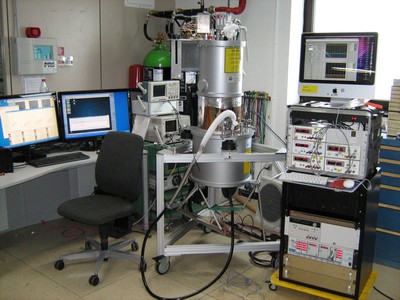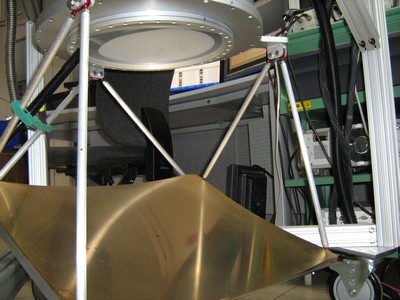GISMO run #5 (March 2012): new optics and permanent position
Staffing of the test run
- GSFC: J. Staguhn, D. Fixsen, A. Kovacs, S. Maher, E. Sharp,
- IRAM: S. Leclercq, IRAM Granada staff
Test run schedule: 02.03. - 12.03.2012
IRAM 30m schedule page: http://www.iram.fr/IRAMFR/PV/sche/12/s09v1.html
GISMO does not appear with an explicit project number because the idea is to take up to 20 hours of the telescope time on the heterodyne pool (project 440-11). The decision for the time slots allocated to GISMO will be taken in real time (few to several hours in advance) through discussion between the GISMO team and the pool manager, based on observiong pool constraints (e.g. LST) and weather conditions.
Summarized schedule of the run:
Dates |
Main event |
Before 01.03. |
Arrival of GISMO hardware at the telescope |
02.03. Friday |
Arrival of ES, SM and DF at the telescope, start mounting GISMO in the workshop |
05.03. Monday |
Arrival of JS, AK and SL at the telescope, GISMO cooled down |
07.03. Wednesday - 11.03. Sunday |
GISMO on sky slots (up to 20 hours total). DF takes plane on Fri 09.03. |
More details on schedule, people, organization, hardware, and test plan: GISMO-On_Sky_Test_Plan_2012_v2.pdf
GISMO final version
Same 8x16 pixels as 2nd to 4th runs, working at 2mm (the –3dB window is 140-162 GHz), with an individual pixel size = 0.9 Fλ.
Same special features from previous runs: 2 motorized neutral density filters, controllable shutter, automated observing procedures usable via a dedicated GUI (see observer's manual), CRUSH reduction package.
- New updates: cold baffle, final position in the receiver cabin with corresponding warm optics.
Daily reports
Friday 02 March - Sunday 05
Elmer, Steve and Dale arrived at the telescope, and start mounting GISMO, then cool it down.
Monday 06 March
Johannes and Samuel arrived at the telescope. GISMO was close to base temperature. Water on the entrance window of the big baffle. Blow boil off nitrogen to it, then just use a fan. Look at the sky through the open window. Nice IV curves even without neutral density filter ==> very good sign that there's much less stray light than last year, so sensitivity should improve...


Tuesday 07 March
The installation of GISMO into the receiver cabin took most of the day and part of the night: check measurements and installation plan, built a crate, machine the shelve, etc., install the shelve first. Then in the afternoon move GISMO and all the other parts up in the cabin, and start mounting. Plug the electronics: few things to adjust but everything looks fine in the end. Some small offset in positions (less then 2.5cm) and orientation (less than a degree) of some of the elements. Simulate the effects of these offsets in Zemax: position offsets have almost no effect as long as the optical axis is well aligned (which we take care using the laser), angle offset very critical for the illumination of the pupil: we need a perfect alignment of the orientation of M6 toward M5; this will be done on the sky minimizing the load from the background (impossible to do it otherwise since a fraction of a degree is critical).
Some pictures posted soon.
